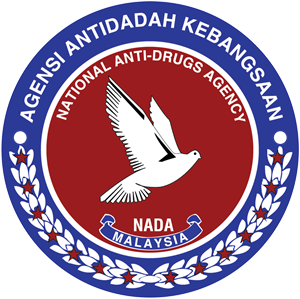INTODUCTION
The Organizational Anti-Corruption Plan (OACP) AADK 2020-2024 was launched by YB Dato’ Seri Hamzah bin Zainudin, Minister of Home Affairs on 10 July 2020 in conjunction with the Working Visit of YB Minister of Home Affairs to PUSPEN Dengkil, the National Anti-Drug Agency.
This Anti-Corruption Plan is an anti-corruption policy document at the organizational level that aims to address problems and weaknesses in governance, integrity, and anti-corruption among AADK citizens.
OACP AADK 2020-2024 is the commitment of the National Anti-Drug Agency to fighting corruption and integrity misconduct for the well-being of the organization in line with the government’s wishes as stated in the National Anti-Corruption Plan (National Anti-Corruption Plan (NACP)).
The number of original initiatives in the AADK OACP was as much as 40. However, a Meeting of the Organizational Anti-Corruption Plan Evaluation Committee (OACP) held on 23 December 2020 has agreed to implement the AADK OACP starting from 2021-2025. This considers the time allocated in creating an introduction and understanding session for all levels of citizens to ensure the implementation of the OACP can be done effectively.
At the same time, the meeting also agreed that the number of initiatives was reduced from 40 to 36 initiatives. 2 initiatives were merged while another 2 initiatives were dropped. 9 initiatives are short-term initiatives, 22 initiatives are medium-term and 5 initiatives are long-term.
OACP FRAMEWORK
A. 8 Strategic Objectives
- Improve human resource management.
- Strengthen the financial and procurement management system.
- Improve the effectiveness of asset and store management.
- Improve the efficiency of work process implementation through increased professionalism and the use of technology.
- Strengthening the implementation of customer service management.
- Improve the service delivery process and transparency in program implementation.
- Improve the effectiveness of the service delivery system.
- Improve the customer service rating system.
B. 5 Strategies
- Improve the efficiency of management services as a whole.
- Strengthen the implementation of enforcement and security.
- Improve the implementation of prevention programs and the delivery of information.
- Provide transparent and professional services to clients and significant others.
- Improving the quality of service to back customers as a whole.
C. 5 Priority Areas
- Management services
- Enforcement and Security
- Prevention
- Treatment, Medicine, and Rehabilitation
- Public relations
D. 9 Main Initiatives
- In 1 : Enforcing job rotation and job matching to avoid conflict of interest.
- In 15: Ensuring procurement planning of supplies and services is by current requirements with compliance to procurement, supply, and contract procedures transparently and fairly.
- In 16: Mandating the implementation of a check & balance system management mechanism consistently to detect and identify possible occurrences during activities:
- Falsification of documents; and
- Improper payment claims.
- In 18: Ensure that all rules and instructions related to asset and store management are followed to ensure systematic, comprehensive, and integrated asset management.
- In 23: Improving Urine Handling SOP.
- In 24: Developing Urine Strip Supply Distribution Guidelines.
- In 25: Developing Operational Management Guidelines at Entertainment Centers.
- In 27: Developing Guidelines for the Use of Current Communication Tools:
- carry out the operational implementation
- implementation of operations in rehabilitation institutions
- In 35: Provide disclosure related to procedures in the selection of companies and supplies for the implementation of prevention programs in the community periodically.
E. Time frame
- 5 Long Term initiatives (5 years)
- 22 Medium Term initiatives (3-4 years)
- 9 Short Term initiatives (1-2 years)
Coordination and Monitoring Mechanisms
AADK’s OACP Implementation Achievement Report is presented to Top Management 3 times a year through AADK’s Anti-Corruption Committee Meeting (JAR).
Reassessment
Each AADK OACP initiative will be evaluated as a whole at the end of each year. Implementers need to present the problems and obstacles encountered for re-evaluation before being agreed upon at the OACP Committee level.










 Users Today : 351
Users Today : 351 Total Users : 2659261
Total Users : 2659261